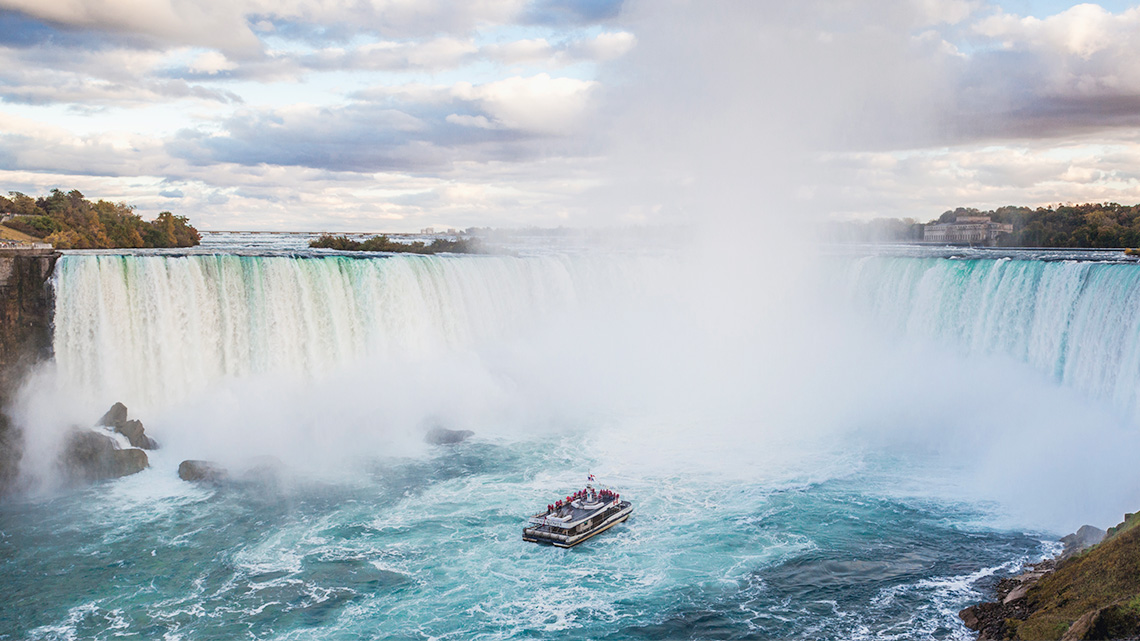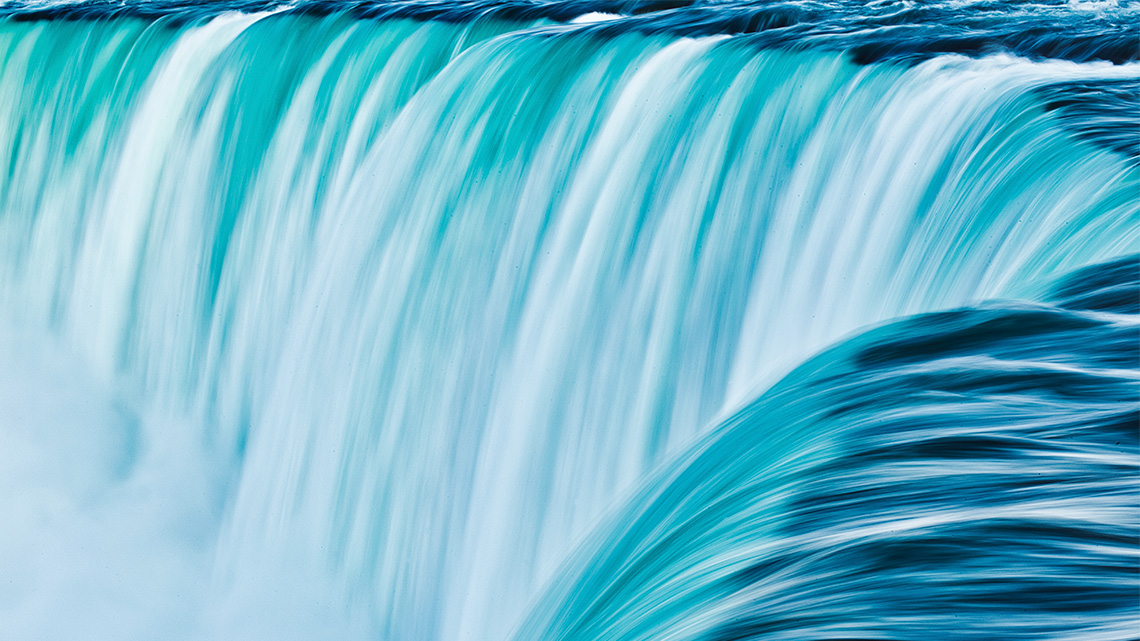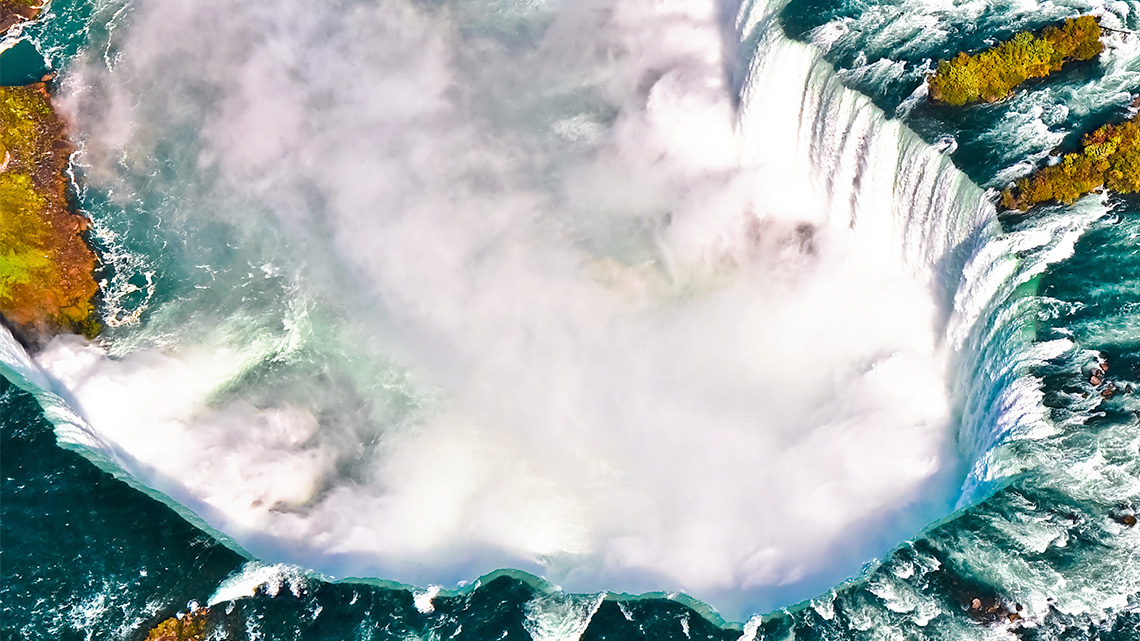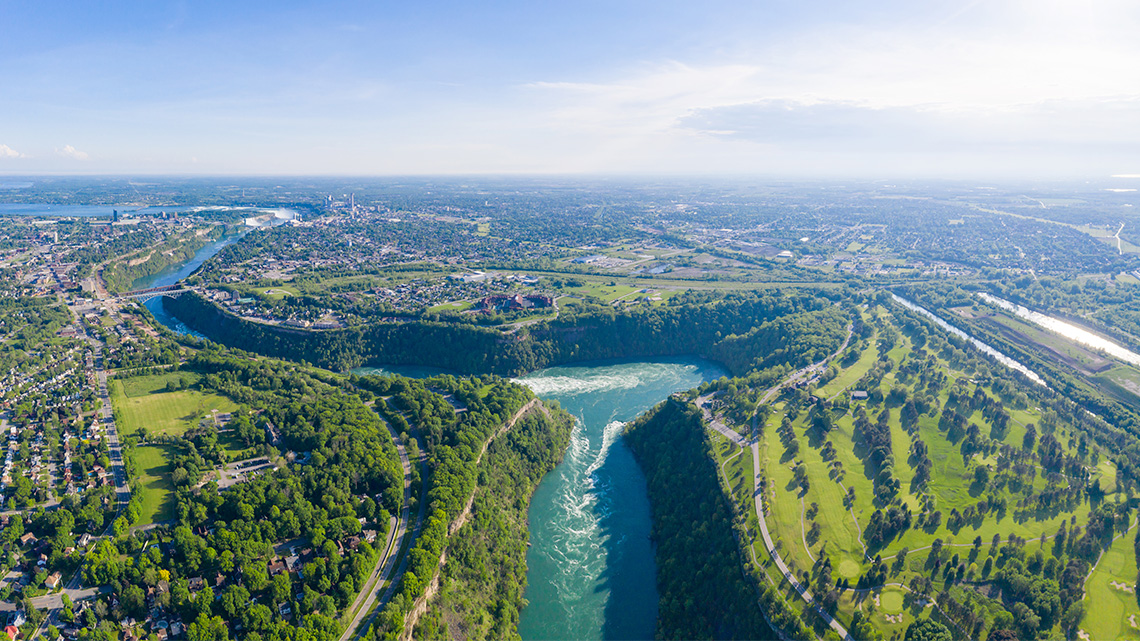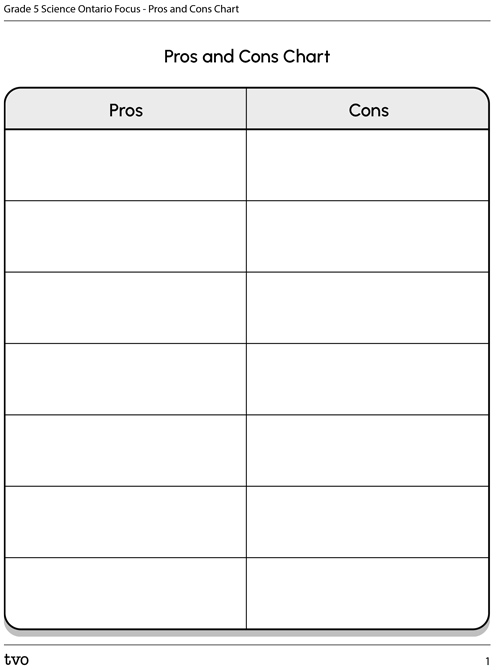Minds On
Natural wonders
Explore the following poem titled “Natural Wonders.”

Water swirls and froths As it begins to tip over the edge And fall in Heavy sheets Thundering Down Down Down Until it crashes at the Bottom in a shower Of mist And foam.
What might this poem be describing?
Action
Waterfalls
Explore this video to see a waterfall in action.
In the Minds On, we explored a poem about a waterfall.
A waterfall is a body of water that falls over a ledge of rock into a pool below. As parts of the earth wear away or erode, it can lead to the creation of waterfalls.
The water from a waterfall pounds down with a lot of force. By the time that water reaches the ground, it has a lot of power.
Do you think water falling from tall waterfalls have more or less power than the water from shorter waterfalls?
Press ‘Answer’ to access information about waterpower and waterfalls.
The higher the waterfall, the more force the water pounds down with.
We can say that the water about to fall from a tall waterfall has more potential energy than the water at the top of a shorter waterfall.
When the water drops or moves through the air, the potential energy decreases as the water gets closer to the ground. The moving water has kinetic energy, or the energy of movement.
As the water falls through the air, its kinetic energy grows as its potential energy decreases.
So, when it finally reaches the bottom, all of its potential energy has been turned into kinetic energy. The energy changes form but is never created or destroyed. This is an example of the law of the conservation of energy.
Press the following tabs to access definitions of potential and kinetic energy and the law of conservation of energy.
This law says that the amount of energy in a system never changes. No new energy is created, and no old energy is destroyed. Instead, energy is converted from one form to another.
This can be defined as energy “at rest”. Some examples of potential energy use include standing and sleeping. There is possibility or potential for energy to be used.
This is considered “moving energy”. Some examples of kinetic energy use include walking and swimming.
Can you think of any other examples of the law of conservation of energy?
Ontario connection
This learning activity highlights people, places, or innovations that relate directly to the province of Ontario. Enjoy the exploration!

Niagara Falls
Niagara Falls is one of the natural wonders of the world!
Explore the following images of the falls. What do you notice about the features of a waterfall?
Press ‘Possible Answer’ to access some features of a waterfall.
- the water is coming off the edge
- there’s a pool at the bottom
- the water is moving fast
Niagara Falls is made up of three different waterfalls along the border of the cities Niagara Falls, Ontario, Canada and Niagara Falls, New York, USA. The American Falls and the Bridal Veil Falls are located in Niagara Falls, New York while the Horseshoe Falls are located in Ontario.

A map of Ontario and New York with the focus on Lake Erie and Lake Ontario. There are arrows going from Lake Erie, through Niagara Falls, into Lake Ontario, up through the St. Lawrence River and into Montreal.
All three waterfalls are part of the Niagara River. The Niagara River connects Lake Erie and Lake Ontario.
What do you notice about the direction the water is traveling and how it is traveling before and after it gets to the Falls?
Press ‘Answer’ to access the direction the water is traveling.
Water flows from Lake Erie to the Niagara River, over the Falls and into Lake Ontario. It then continues into the St Lawrence River.
How can we use the power of water?
We use the power of water for electricity. It is called hydroelectricity.
Hydroelectricity
Hydroelectricity or hydroelectric power is a form of energy that uses the power of moving water to generate electricity. The electricity is fed into an electrical grid that helps to power to homes, businesses, and other industries.
We will explore what scientists and engineers have created in Niagara Falls, Ontario to generate electricity.
Over 100 years ago, power companies began to use water in the Niagara River to for electricity. Hydroelectric generating stations such as the Sir Adam Beck Hydroelectric Generating Stations, were built then and are still used today. Some of the water flowing north along the river flows into the pipes which lead it down to the generating stations. Some of the water continues to flow until it reaches the falls. From there, it flows into Lake Ontario and continues.
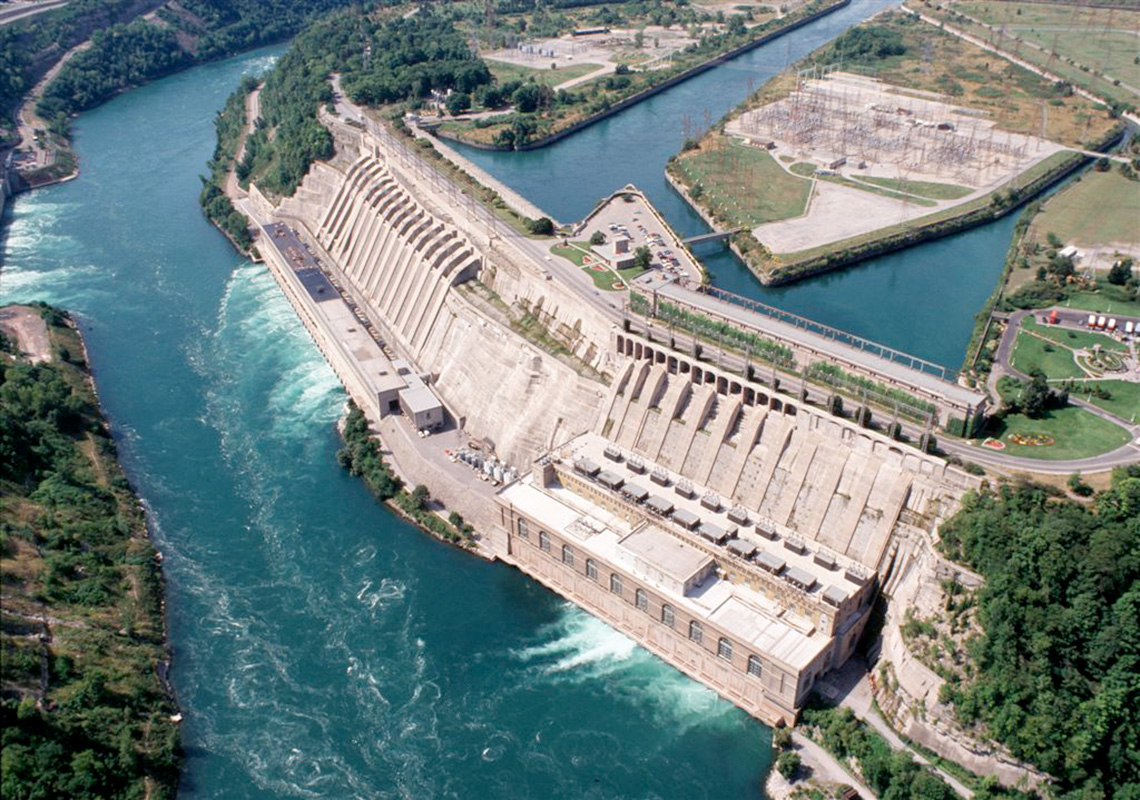
So, how does the Sir Adam Beck Hydroelectric Generating Station use the power of moving water?
Scientists and engineers have created hydroelectric power plants to take the power of moving water (kinetic energy) and use it to create electricity. Hydroelectric power is an example of renewable energy.
Press ‘Definitions’ to access the meaning of renewable and non-renewable.
Renewable energy is from a source that is not depleted when used. This type of energy is limitless, as it continues to be produced naturally in our environment.
A non-renewable resource is a natural substance that is not replenished with the speed at which it is consumed. The supply is limited, and it will ultimately be gone one day.
A hydropower plant is located at the dam of a river. It takes the (potential) energy of water located high up in a reservoir and captures its energy as it drops to the bottom of the dam.
Explore the following flashcards to learn about the different parts of a hydroelectric power plant.
Next, explore the following animation to find out how all these parts work together!

Water is collected in the reservoir, then channeled via the stations intake into a pipe called a penstock that carries the water down to the turbine. As the water flows down the penstock, the water pressure increases. This pressure causes the turbine to spin, which in turn spins a generator.
What do you notice about the movement of water through the hydroelectric dam? Record your thoughts using a method of your choice.
Learning check!
For each sentence, select the missing word from the drop-down menu.
Consolidation
What are the pros and cons?

Check out this video to learn about the steps of the Scientific Research Process.
We have learned how hydroelectric power is generated and that it is a source of renewable energy.
What might be some of the pros and cons of hydroelectric power?
Hint: In this case, the pros are the reasons why hydroelectric power is positive or helpful for people and the environment while the cons are the arguments against using hydroelectric power for its negative impact on people and the environment.
Explore the Scientific Research Process and then use the following passage and the t-chart organizer to record your information. You may also record using another method of your choice.
Reading Time
The pros and cons of hydroelectricity
Hydroelectricity is an environmentally friendly form of energy production. It does not need fossil fuels to run so it does not create air pollution.
Since there are bodies of water all over the world, hydroelectricity is an option that can be used by people in many different countries. Also, the way the water cycle replenishes water hydroelectricity makes it a renewable resource.
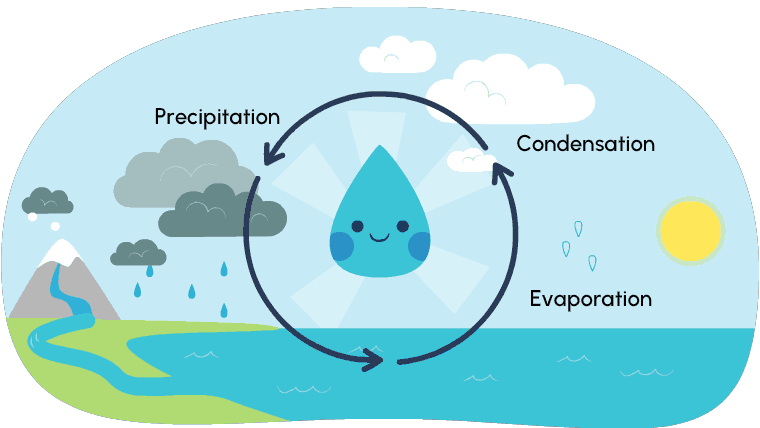
It is a very efficient energy source. A hydroelectric energy plant is able to convert 90% of water into electricity.
Energy sources like solar power decrease every night when the sun goes down, while wind power must have a constant wind flow or breeze or it won’t generate electricity. Since water is always flowing, hydroelectric energy is available throughout the day.
Once a hydroelectric dam has been built, it does not require a lot of maintenance. This makes it a more affordable option over time. People can also use the reservoirs created in hydroelectric power plants to do activities like fishing and swimming.
While hydroelectric can be a great option to provide power to a large community, it can also have a negative impact on the environment. The construction needed to build a new dam involves creating new roads and power lines. These can affect the homes of animals and affect plant life in the area.
A dam blocks the flow of water which can impact fish migration, specifically for salmon. Dams also limits the movement of the water, which can lower the level of oxygen in the water. This can affect any animals who live in water.
Building a dam can also affect people’s homes. Depending on the size of the hydroelectric power plant, people can be forced to move out of their community.
While a dam may not need a lot of maintenance, it is expensive to build. Sometimes dams take up to 2-5 years to complete and other times it can take much longer. The longer a dam takes to build, the more expensive it can be.
Complete the Pros and Cons Chart in your notebook or using the following fillable and printable document. If you would like, you can use speech-to-text or audio recording tools to record your thoughts.
Think about it!
- Do you think the use of hydroelectricity is something that will continue in the future? Why or why not?
Reflection
As you read through these descriptions, which sentence best describes how you are feeling about your understanding of this learning activity? Press the button that is beside this sentence.
I feel…
Now, record your ideas using a voice recorder, speech-to-text, or writing tool.
